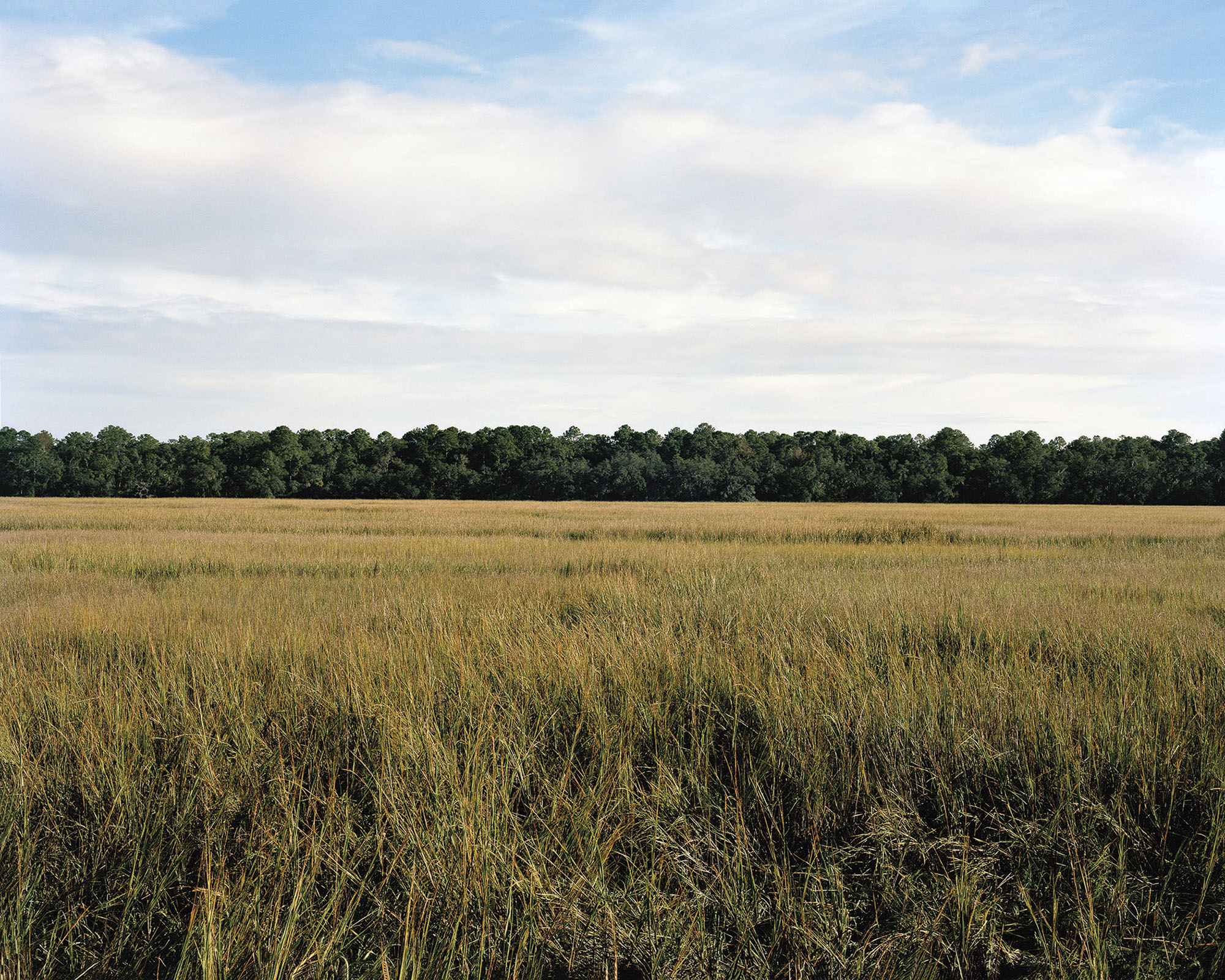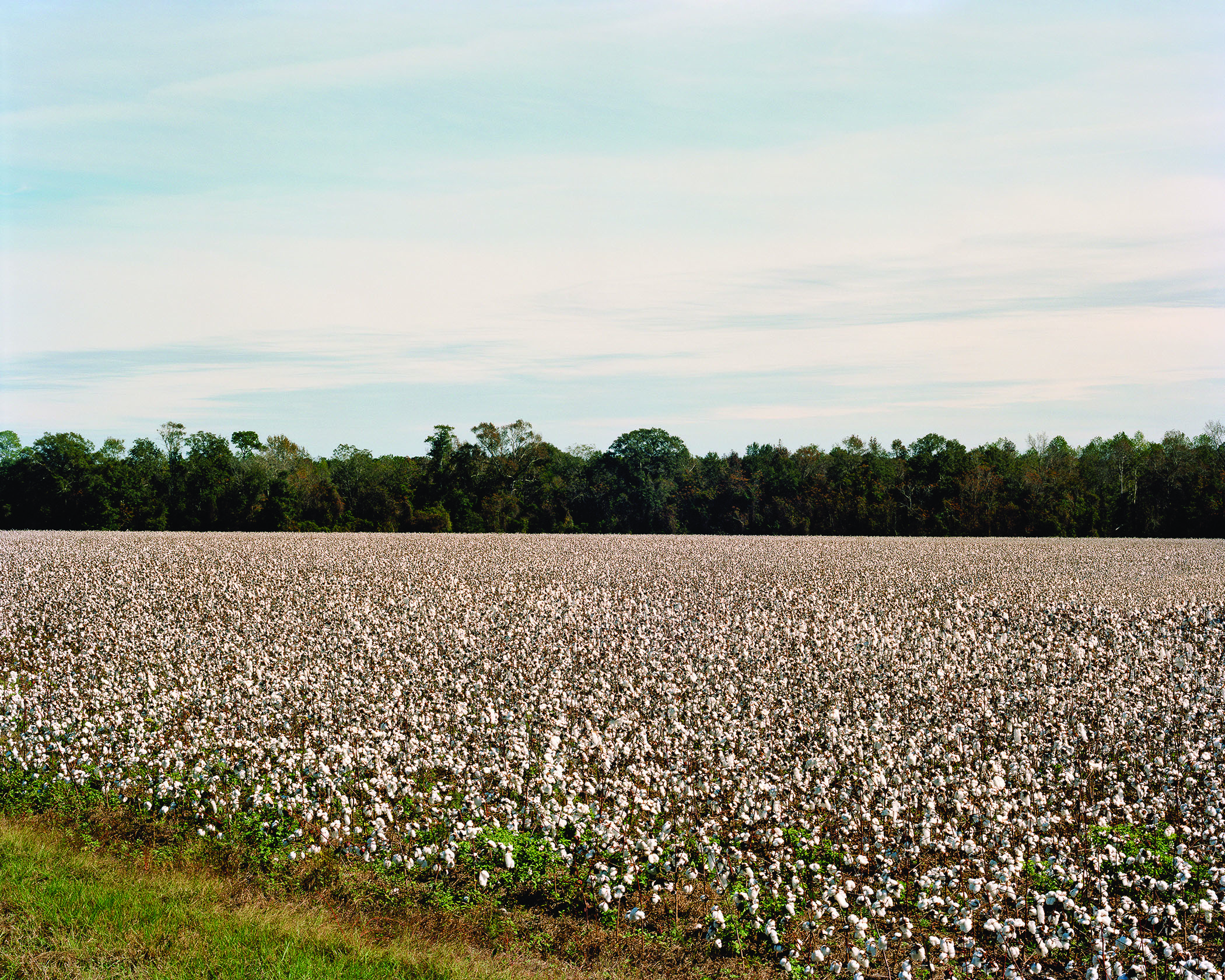A Movement in Every Direction: Legacies of the Great Migration
PDF: Ming, review of A Movement in Every Direction
Curated by: Jessica Bell Brown and Ryan N. Dennis; Brooklyn Museum presentation organized by Kimberli Gant with Indira A. Abiskaroon
Exhibition schedule: Mississippi Museum of Art, Jackson, MS, April 9–September 11, 2022; Baltimore Museum of Art, October 30, 2022–January 29, 2023; Brooklyn Museum, New York, NY, March 3–June 25, 2023; African American Museum, Los Angeles, CA, August 5, 2023–March 3, 2024; University of California Berkeley Art Museum and Pacific Film Archive, April 13, 2024–September 22, 2024. Additional venues to be announced.
Exhibition catalogue: Jessica Bell Brown and Ryan N. Dennis, eds., A Movement in Every Direction: A Great Migration Critical Reader, exh. cat. New Haven, CT: Yale University Press, 2022. 320 pp.; 189 color illus. Hardcover: $40.00 (ISBN: 9780300264463)
Creating space for the ideological, intrapersonal, and community-based transitions that the Great Migration prompted, the exhibition A Movement in Every Direction: Legacies of the Great Migration presents the works of twelve Black artists in their informed retelling of this Black American geographical movement. From sculpture to film, the art of the exhibition spans mediums and generations—offering a space to process the lives and lineages altered by this movement.
As a former Brooklyn Museum Curatorial Photography Intern, I worked closely with Indira A. Abiskaroon on the 2022 survey of the late surrealist photographer Jimmy DeSana. I connected with Abiskaroon before writing this exhibition review and asked to visit the museum on Friday, June 23, 2023, two days before the exhibition closed. Abiskaroon graciously and promptly organized for two current interns, Edward Moreta Jr. and Farren Yuan, to give me a private tour around the exhibition before it opened to the public for the day. I had the privilege of navigating quiet, empty galleries with intimate access to the works. I steadily explored the galleries, in awe over Larry W. Cook’s landscape and portrait prints (figs. 1 and 2) and grief-stricken by Carrie Mae Weems’s highly personal and vulnerable video installation Leave! Leave Now! (2022) (fig. 3). As the child of Afro-Caribbean immigrants, my immediate and direct family history is not tied to the movements of the Great Migration, but the experiences of migration and emigration are easily recognizable and relatable. My understanding of the Great Migration and its systemic impact on Black America expanded after experiencing the Brooklyn Museum’s presentation.
Seeking economic and social opportunity, security, and basic human rights, nearly six million Black people made the arduous move out of the South between 1910 and 1970. Black people migrated west, northwest, east, and northeast, resettling in major cities, including Oakland, Chicago, and Baltimore. Many of the artists in the exhibition confront their own personal ties to the Great Migration through their familial experiences and ancestral histories. My interest in the US South as an origin point stems from the beginnings of Black life in America. This land serves as the precipice for so much anti-Black racism and violence in the United States, but also as a cultural and historical haven for many Black Americans. Thus I was intrigued by artworks in the exhibition that somewhat honored the US South, as their connections were not entirely severed after migration and their legacies survived.
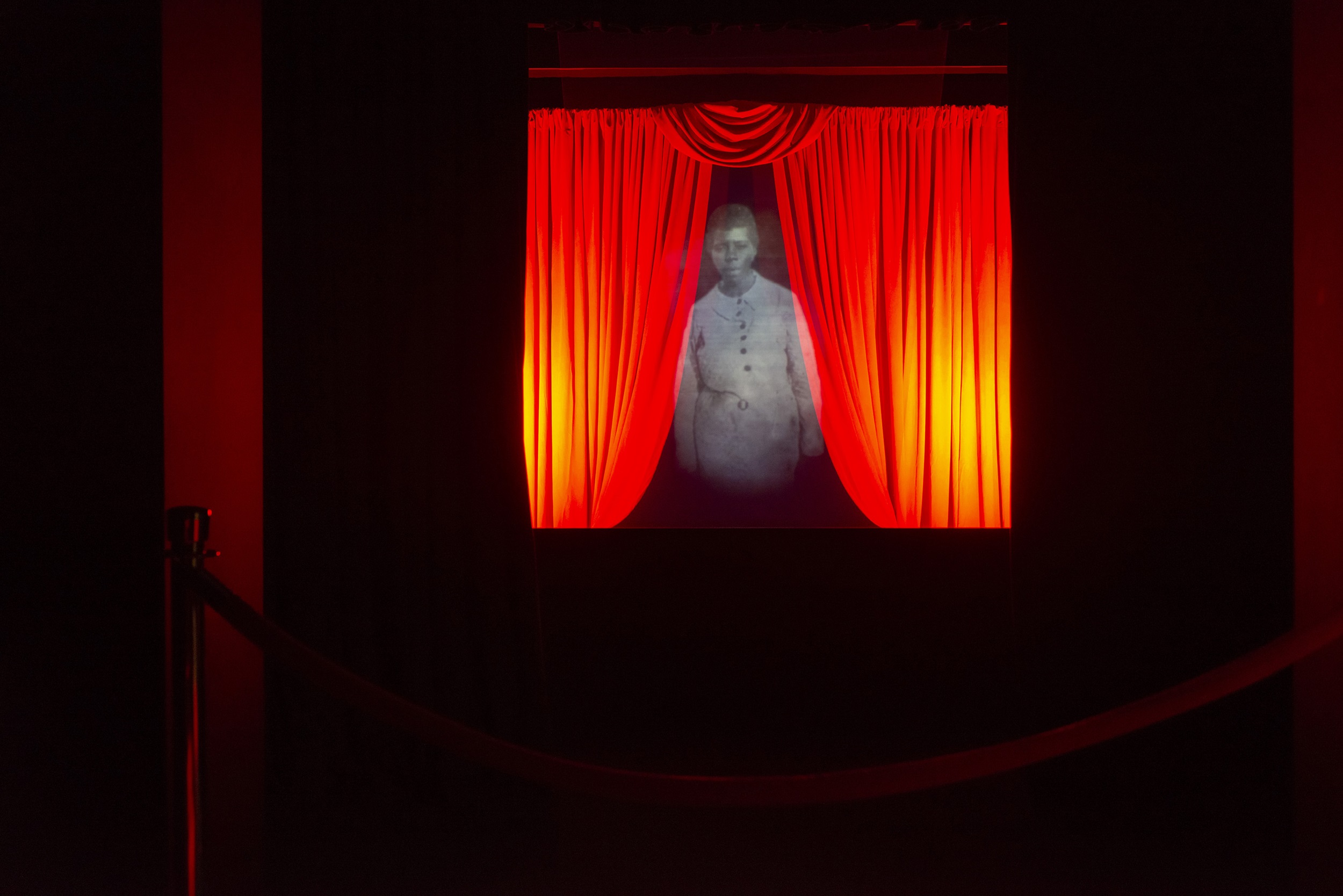
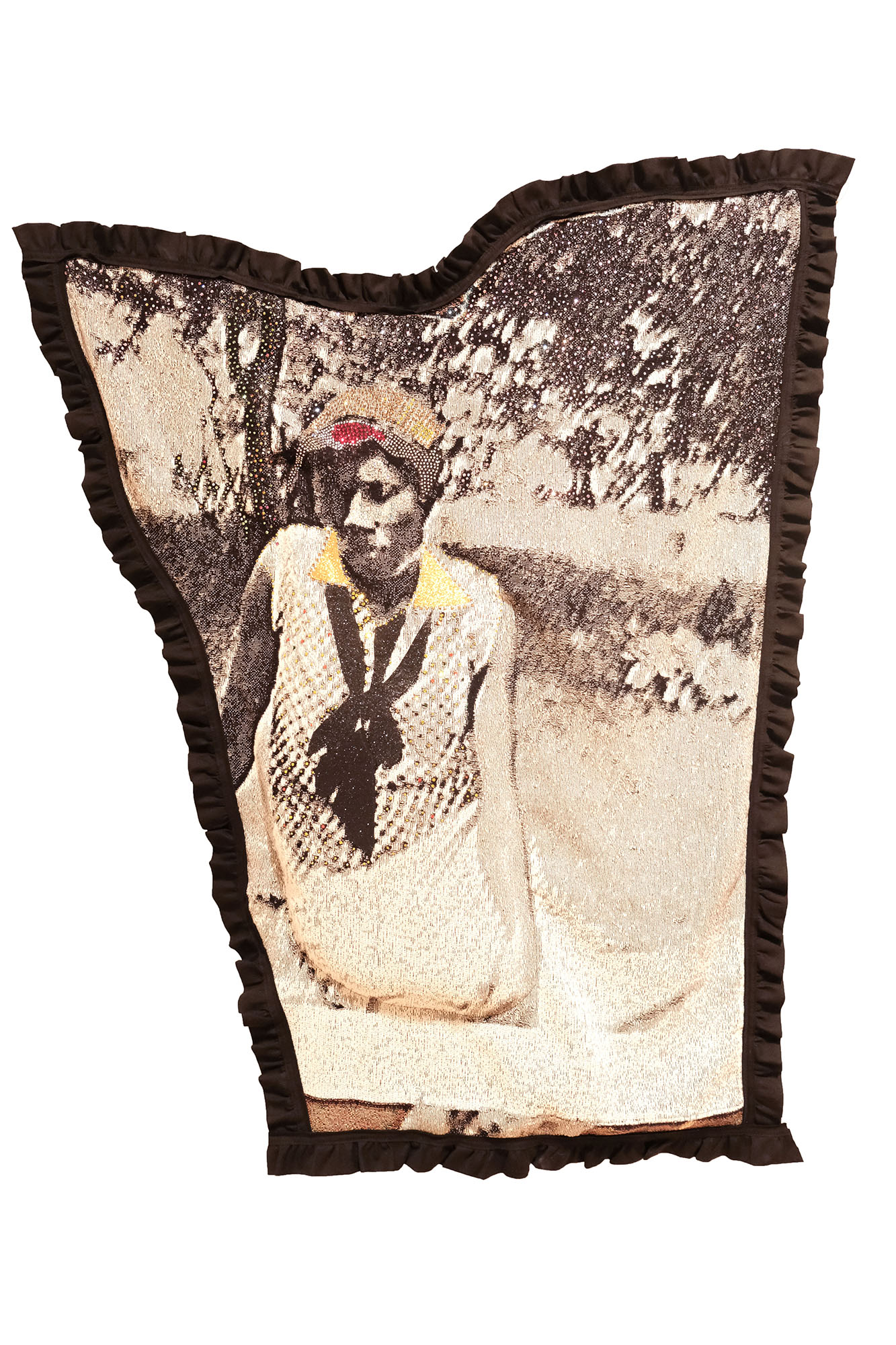
Situated in the Elizabeth A. Sackler Center for Feminist Art on the fourth floor of the Brooklyn Museum, the Great Migration exhibition spanned several galleries, offering considerable room for these artworks to breathe. The exhibition surrounded Judy Chicago’s installation The Dinner Party, which occupies this space historically dedicated to female empowerment. Representing women’s importance and significant contributions is a throughline in some of the works in the exhibition, such as Afro-Creole artist Akea Brionne’s textile that honors the women in her lineage and their integral role in making the Great Migration journey possible.
Brionne presents her familial archive on hand-embellished textiles that act as an ode to the women, specifically her great-grandmother and great-aunts, who enabled the men in her family to make the move up north (fig. 4). The devoted and sacrificial foundation these women crafted in the South is echoed through Brionne’s creation of this homage, which is an introspective reference to female makers.
The exhibition is intentional in its approach to the artists’ histories, combining varied interpretations of migration, mediums, and generational perspectives. In Theaster Gates Jr.’s large-scale installation The Double Wide (fig. 5), the artist adapts inherited methods of food preservation. Having spent summers in Mississippi with his uncle, who had his own double-wide mobile home, Gates demonstrates Southern US lifestyle practices through a quintessentially Black lens. Illuminated by a hot-pink tint and accompanied by videos—one inside the sizable structure and one affixed to the exterior wall of the trailer—this piece is multisensory in its approach, serving as Gates’ immersive archive. The videos are in dialogue with one another, playing live gospel music featuring Gates’ own musical ensemble, The Black Monks. Gates’ perspective is integral to narratives of the Great Migration, as it is important to keep in mind that ways of life, loved ones, and foundations were left behind when families and individuals made the choice to head out of the South in search of upward mobility; communities were harshly impacted by these geographical shifts. Gates, however, reminds us that Black is not synonymous with suffering.
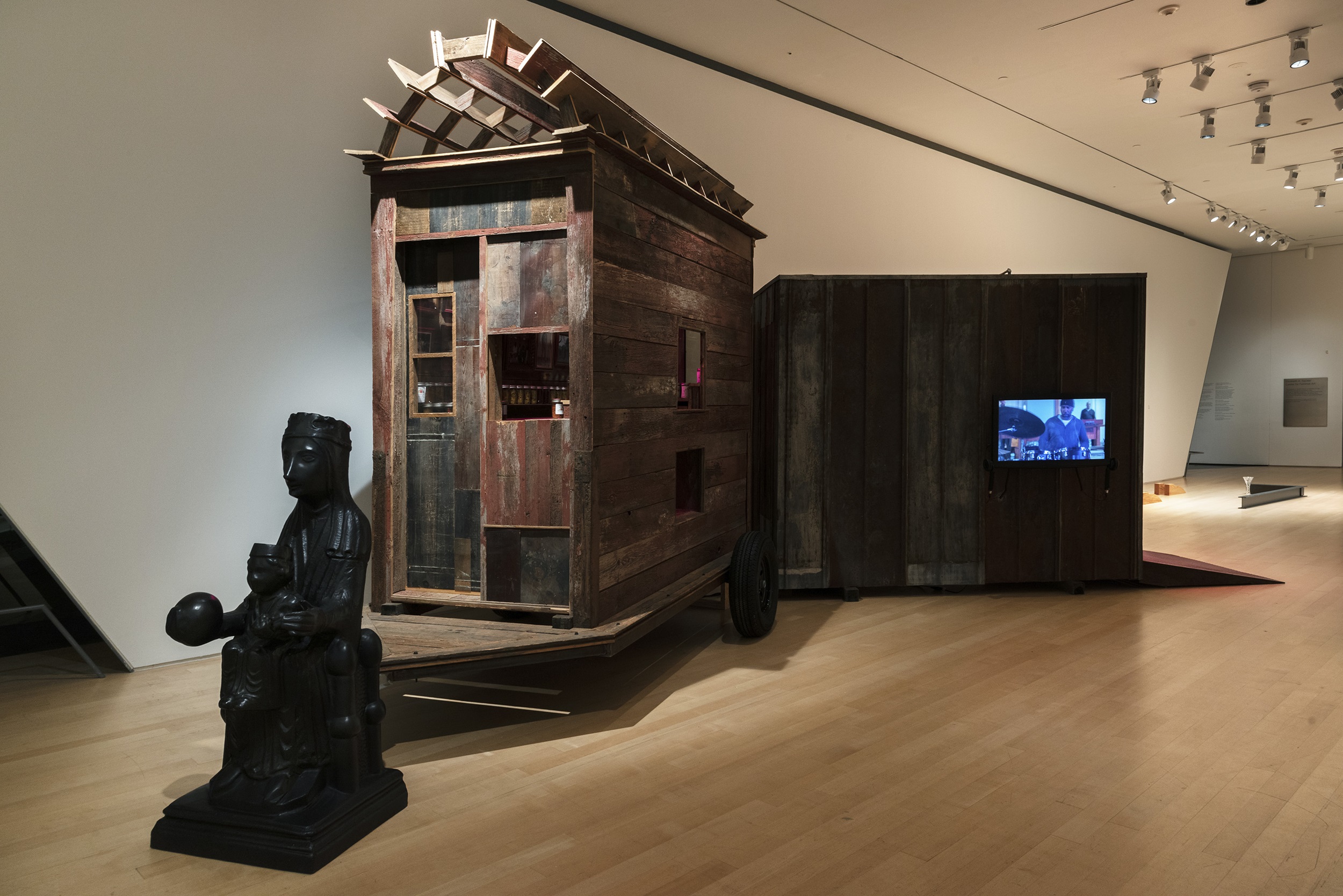
Continuing the significance of the Southern backdrop and its role in the shape of Black families, contemporary visual artist Allison Janae Hamilton highlights architecture, land, and history in her three-channel film installation. Hamilton’s A House Called Florida (fig. 6) transports the viewer into the landscape of the US South, the root of Black culture for many who participated in the Great Migration. The artist highlights the region’s socio-economic impact on Black life both there and beyond, foregrounding the difficulties Black people faced. For Black homeowners, these difficulties included restrictions on selling one’s home and land and strictures on conducting damage control after natural disasters, in addition to the threats they faced for simply possessing a home in the Deep South.

Hamilton honors a legacy that Black people were owed but was seldom recognized or realized. She evokes the possibility of a home that could be passed down through generations and that supported cross-generational realities. People of African descent and their relationship to the South can be a bleak one—stories of discrimination, racism, and trauma abound. The house in Hamilton’s work was once a plantation, once housing slave owners and enslaved people. Furthermore, the reminiscence of the enslaver family that may have lived in “Florida” directly opposes the security and safety of a Black person’s own home. Hamilton considers the past lives that flourished in the house through specific filmic composition, focusing on small design features like the ornate stair banister or contextualizing the environment through detailed shots on adjacent channels. Throughout the video, Black children, musicians, and performers don white and light clothing, a symbolic representation of purification in this occasion, washing away the home’s past and its negative effects on Black well-being. Aged forest trees are in dialogue with the raw wood of the home’s exterior; sounds and visuals of water cleanse a sullied spirit; and the motif of crosses fills the house with conceptions of faith and Christianity. A House Called Florida is a Black reclamation of a Southern home, a right many Black people strived to obtain before, during, and after the Great Migration. Hamilton’s work reminds the viewer of the heavy weight of the past that can be retained in architecture, memory, or ephemera, and the ways that a house and its history can come to life.
The Brooklyn Museum’s exhibition wall text established that its visitors stand in “the ancestral homeland of the Lenape (Delaware) people,” offering a glimpse of the region’s Native history. It also informed visitors that “by 1970, more than 656,000 Black Americans called Brooklyn home” toward the end of the Great Migration. The Great Migration exhibition at the Brooklyn Museum offered cultural and regional context to this data—referencing Brooklyn and its land through educational signage, reading the migration through a feminist lens, and creating personal and interactive experiences for visitors and viewers. At the Brooklyn Museum, two interactive experiences were part of the show. The first was a large world map tracing migration routes; museumgoers were invited to use colorful tape to map their own family’s journeys. The second experience included a soundproof video and audio recording booth, prompting visitors, two at a time, to enter and record what migration means to them in their familial contexts. Such features can be imperative to an art museum’s community and visitor engagement, especially when prompting conversations regarding anti-Black racism, seeking ideological and physical refuge, and addressing distinct US histories. Furthermore, as a museum with an emphasis on social impact and community-based initiatives, the Brooklyn Museum attempted to remain mindful of the very real traumas caused by the Great Migration.
In keeping with ideas of travel and post-migration stories, like the passages of the Great Migration itself, this exhibition has and will continue to travel along similar routes, moving north and west to other venues. From Jackson to Baltimore and from New York to Berkeley, A Movement in Every Direction: Legacies of the Great Migration will find safe passage in the communities transformed and created in the wake of the Great Migration. There is a sense of peace shared among the works in the exhibition, despite the pain caused by much of its subject matter, in that the artists present their works in the light of liberation. This retelling is crucial, serving as an archive and a legacy from ancestor to artist. The emancipating impact of the exhibition is a validating one, presenting us with the aftereffects of these troubled histories and offering all individuals, particularly visitors of African descent, potential tranquility after migration.
Cite this article: Chloe Ming, review of A Movement in Every Direction: Legacies of the Great Migration, Brooklyn Museum, Panorama: Journal of the Association of Historians of American Art 10, no. 1 (Spring 2024), https://doi.org/10.24926/24716839.19021.
About the Author(s): Chloe Ming is the Manager of Exhibitions at the Leslie-Lohman Museum of Art, New York, and an MA student in Art History, Hunter College, New York.


